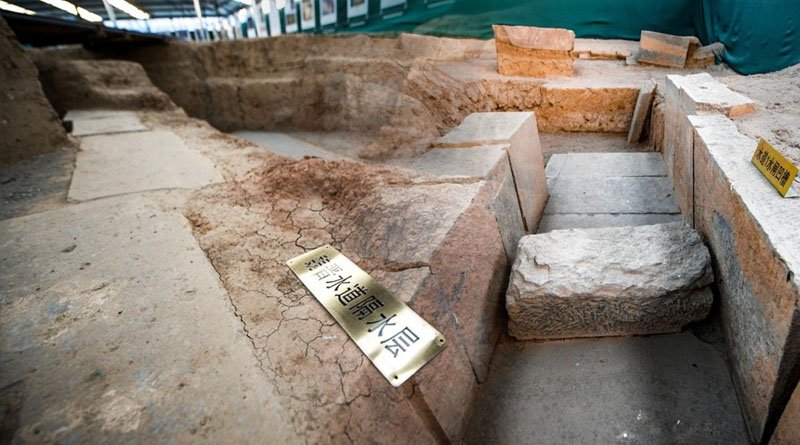The excavation on the Qianqiu Gate site of ancient palace started in 2021, and researchers later found large-scale underground water channels beneath the gate site’s square.

Over 80 metres of water channels dating back to the Wei and Jin dynasties have recently been discovered at the ancient capital Luoyang site in today’s Henan Province (220-420). It demonstrates the ancient dynasties’ ability to use water resources and improve the environment at the time, as well as mature techniques for building water conservation facilities.
The excavation on the Qianqiu Gate site of the ancient palace started in 2021, and the researchers later found the large-scale underground water channels beneath the gate site’s square.
So far, four water channels have been discovered, all stone culverts running side by side from southwest to northeast. The channels were confirmed to be built together and follow a unified construction planning, said Guo Xiaotao with the Institute of Archaeology under the Chinese Academy of Social Sciences.
Such ancient water conservation facilities with large-scale layouts and delicate designs are the first to be spotted during the excavation work on the Luoyang ancient city.
The manhole covers above the channels also have square holes to facilitate rainwater collection. The water channel ruins are believed to have introduced water sources outside into the palace city and then allowed the water to flow into lakes of the Xiyou Garden in the north of the imperial palace.
The facilities were likely part of the garden’s water diversion project inside the ancient capital city’s palace and later reused by Emperor Xiaowen of the Northern Wei Dynasty (386-534), said Liu Tao with the institute.
The discovery further explores the royal garden layout of Luoyang at that time and serves as a historical reference for modern urban water resource utilization, Liu added.
Luoyang city site, located in today’s Luoyang in Henan, has a history of over 1,500 years, while for about 600 years in its vast history, it served as the capital city for many dynasties in ancient China.
Original published at Global Times